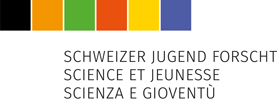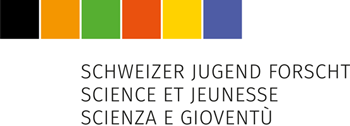Literatur | Philosophie | Sprache
Sina Buchholz, 2003 | Zürich, ZH
«Sine + Cura»—what does that mean? The solution to this not strictly mathematical equation is «securitas,» Latin for security, which has become a central concept for Western societies. Guided by three questions, I scrutinise the human need for security in my project, a scholarly magazine titled Sine plus Cura: Approaching the Human Need for Security. How did this need influence historical developments? What are philosophical standpoints? Where can we observe its manifestations today? An ensemble of texts from different genres—essay, short story, reportage, opinion piece, interview, and photography—traces the Western history of this striving towards security from antiquity to today. Using the form of interactive pages, I repeatedly challenge the reader to critically consider and develop their personal arguments in relation to security. Furthermore, design elements, imagery, and colour schemes establish varied relationships to and within the texts, working to interrogate and destabilise our monolithic, albeit vague, notions of «security.»
Introduction
How has the human need for security influenced historical developments? What are philosophical standpoints? Where can we observe its manifestations today? Utilising these three questions as both a point of departure and as a framework, Sine plus Cura is a magazine that offers five analyses, an interview, and a photography series to scrutinise the topic from different angles. Sine plus Cura does not aim for conclusiveness but provides examples grappling with the key principles intrinsic to our Western understanding of security.
Methods
The form of the magazine blends visual and textual spheres. Using different literary genres, such as the short story, the essay, the reportage, and the opinion piece, it aims to broaden our conception of scientific and academic enquiry. The visual sphere—comprising design elements, imagery, and colour schemes—is tied to the text in myriad ways, aiming to reconceptualise security as a multi-layered and granular notion. Sine plus Cura furthers this approach by incorporating other voices and challenges the reader to engage with the magazine on interactive pages.
Results
The magazine opens with a short story (1) that shows how the Stoic-cum-Epicurean idea of security is ultimately ambiguous as it diminishes its protagonist’s livelihood. This is followed by an essay (2) that positions insecurity as a central lens through which we can examine and understand the Baroque period and its concept of vanitas, its literary and artistic styles, and emergent Protestantism. Sticking with the essay form, in article 3 a pendulum-turned-philosopher discovers and explicates the «era of security» as presented in the works of Locke and Smith and thus posits security as an Enlightenment ideal intrinsic to its call for equality, statehood, economic liberty, rational thinking, and freedom. Tracing Zurich Dada’s infatuation with insecurity in a reportage (4), I ask for us to consider the remedial aspects of insecurity in our own lives. In an opinion piece (5), I relate «feel-good feminism» to being a «good girl,» firmly tying the dual role of activist-cum-mainstream feminist to the human need for security. The interview with Susanne Krasmann, Professor of Sociology at the University of Hamburg, establishes contemporary security politics as ambiguous, highlighting its relationship to climate protests, terrorism, and ideals of retirement. Finally, the photography series emphasises the human aspect in the need for security by showing how intimate objects embody personal ideas of security.
Discussion
In terms of method and content, Sine plus Cura demonstrates that security is not simply an entity. Instead, it is a heterogeneous, malleable, and at times contradictory concept in what can be broadly understood as Western culture. Although firmly tied to its initial framework and the guiding questions, Sine plus Cura also oversteps these particular limits to interrogate security itself, as the medium of the magazine is not restricted to either a historical, philosophical or contemporary discussion but instead brings them all into conversation.
Conclusions
It is precisely the multidimensionality, contradictoriness, and rich history of the concept of security that make it so attractive. Maybe this also explains the readiness with which it is deployed–albeit mostly in unscrutinised ways–in the news, in public discussion, and other Western cultural spaces.
Würdigung durch die Expertin
Hannah Schoch
Sina Buchholz presents an impressive examination of the concept of security that ranges from the stoic philosophers, the Baroque and Enlightenment period, to Modernism’s Dada and contemporary research in the Sociology of Security. Presenting her argument in the form of a scholarly magazine, she makes intelligent and effective use of different genres and design elements to shed new light on the concept. Rigorously researched and attentive to the shifting nuances over time, she convincingly and insightfully teases out the importance of (changing) ideas of security for Western societies.
Prädikat:
hervorragend
Sonderpreis Schweizer Jugend forscht – Literaturecho
Kantonsschule Zürich Nord
Lehrer: Martin Rüesch



